What's New
Displaying results 4771 - 4780 of 4899
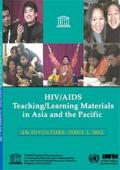
Resource | Tools,
This package is the fourth of a series of repackaged products aimed to serve as a vehicle for alerting our users to a wealth of highly valuable educational resources that exist in the field of HIV/AIDS in the context of adolescent reproductive and sexual health. The purpose of the UNESCO Regional Clearing House’s repackaging programme is to bring to the attention of the users valuable information which would never have been read simply because they seem not to be easily accessible. Very few probably know where they are located; or if they can be accessed, they come in either highly technical or unreadable language or understandably, in the national language. Very often, they also come in overwhelming volumes and very poor presentation that discourage reading.
The information consolidation and repackaging strategy of the UNESCO Regional Clearing House addresses this potential waste of resources by reviewing, analysing and selecting the most useful and relevant information, screening out poor information, processing them into more readable language culling out policy and practice implications and repackaging them into various attractive formats that would render themselves easily readable and applicable to decision-making and programme improvements.
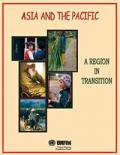
Resource | Publications,
At the International Conference on Population and Development held in Cairo in September 1994 and its subsequent review in 1999 (ICPD+5), 179 countries agreed that population and development are inextricably linked, and that empowering women and meeting people’s needs for education and health, including reproductive health, are necessary for both individual advancement and balanced development. Advancing gender equality, promoting male responsibility, eliminating violence against women and ensuring women’s ability to control their own fertility were acknowledged as cornerstones of population and development policies.
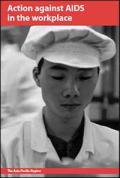
Resource | Publications,
The International Labour Organisation has developed a Code of Practice on HIV/AIDS and the world of work following widespread consultations with governments, employers and workers. This provides practical guidance for developing national and workplace policies and programmes to combat the spread of HIV and mitigate its impact.
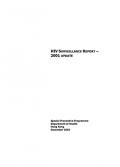
Resource | Publications,
In Hong Kong, the first cases of HIV infection and AIDS were diagnosed in 1984 and 1985 respectively. This paper outlines the epidemiological situation as revealed by the results of the surveillance programmes maintained by AIDS Unit, Department of Health.
The HIV/AIDS surveillance system comprises the following programmes: (a) HIV/AIDS reporting, (b) seroprevalence studies, (c) STD surveillance and (d) behavioural surveillance and other research activities. Surveillance activities are undertaken through the Research Office of the AIDS Unit.
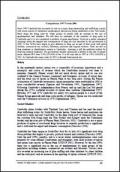
Resource | Publications,
Since 1997 Cambodia has increased its role as a major drug transmitting and trafficking country with recent reports of clandestine amphetamine laboratories being established on the Thai border. More drugs are being used by wider groups of people with an increase in the use of amphetamines and inhalants. We still have no estimates of the numbers of drug users in Cambodia and it is not considered a problem of great significance. However a public education campaign about the dangers and consequences of drug use was launched by the government in 2000. A few NGOs have begun to give attention to drug use as part of their work with street children, commercial sex workers, fishermen, prisoners and migrant workers.
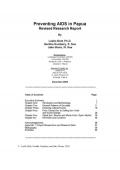
Resource | Publications,
This report summarizes the results of a study carried out with the indigenous population of Papua, Indonesia’s easternmost province. The study arose out of a concern with high rates of HIV infection in the province. While research has shown Papuans have a low level of awareness about HIV/AIDS, there have been no studies which situate knowledge of HIV risk and prevention in a broader context of cultural practice and experience. In 2002, the number of HIV/AIDS cases in the Papua reached 1,000; thus awareness and presentation of HIV transmission is of critical importance. About 90% of HIV cases were contracted by heterosexual encounters, with a further 5% by homosexual encounters. This report does not address HIV transmission via intravenous drug use or blood transfusion, or vertical transmission from mother to child.
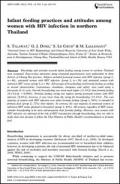
Resource | Publications,
Breastfeeding transmission is accountable for about one third of mother to child trans mission of HIV in developing countries (Mofenson 1997; Nicoll et al., 2000). In developed countries, women with HIV infection are recommended not to breastfeed their children; however, in developing countries, the risk of postnatal HIV transmission has to be balanced against the risk of morbidity and mortality associated with formula feeding.
While continuing to support the UNICEF Babyfriendly initiative and to promote universal breastfeeding, the Ministry of Public Health (MOPH) of Thailand has recommended formula feeding for infants born to mothers with HIV infection since 1993 and has provided free formula to the poorest fraction of the population.
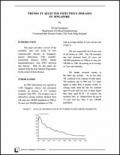
Resource | Publications,
This paper provides a review of the morbidity rates and trends of four communicable diseases in Singapore, namely tuberculosis (TB), sexually transmitted diseases (STD), human immonudeficiency virus (HIV) infection and leprosy. Data for this paper are obtained from the four National Programmes for the control of these diseases.
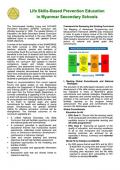
Resource | Fact Sheets,
The School-based Healthy Living and HIV/AIDS Prevention Education (SHAPE) curriculum was officially launched in 1998. The parallel Ministry of Education Life Skills Secondary School Curriculum was subsequently launched in the year 2000, with additional topics to comply with updated School Health objectives.
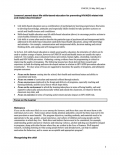
Resource | Publications,
At its best, Life skills-based education is simply good quality education, the principles of which can be used to explore a range of topics, however in UNICEF social and health issues are usually the topics explored - for example, peace education/violence prevention, human rights, citizenship, reproductive health and HIV/AIDS prevention.





